Abstract
Data from volunteers challenged with Salmonella typhi were reanalysed to explore the relationship between challenge dose and severity of disease. Among 120 ill volunteers who received between 10(5) and 10(9) organisms, dose was weakly correlated with peak temperature (r = 0.22, 95% CI 0.04-0.39), duration of temperature above 103 degrees F (39.4 degrees C: r = 0.13, 95% CI - 0.03 to 0.55) and symptom score (r = 0.27, 95% CI 0.09-0.43). The association with symptom score was lost after adjusting for year, and the findings depended on the definition of illness used: with stricter definitions the associations with temperature were also lost. The study shows the need for caution in interpreting the relationship between dose and severity of disease.
Full text
PDF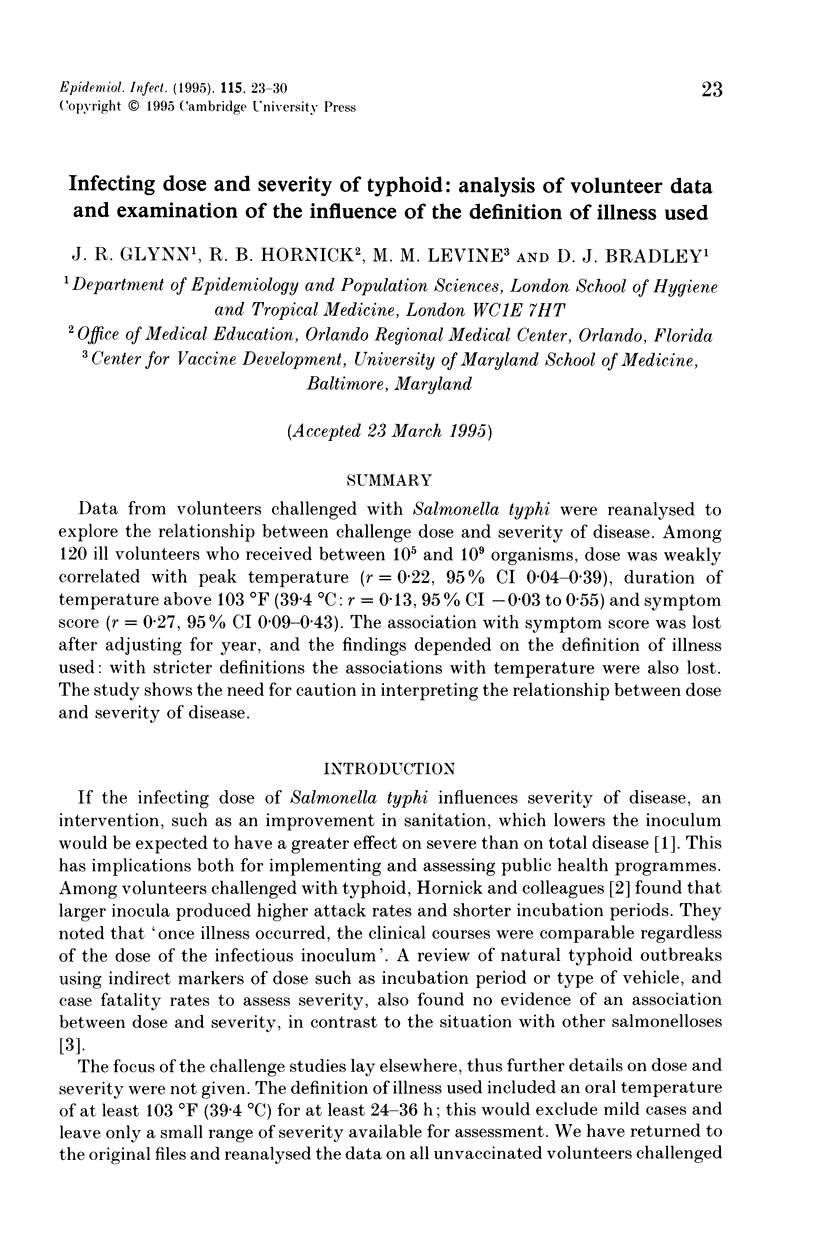
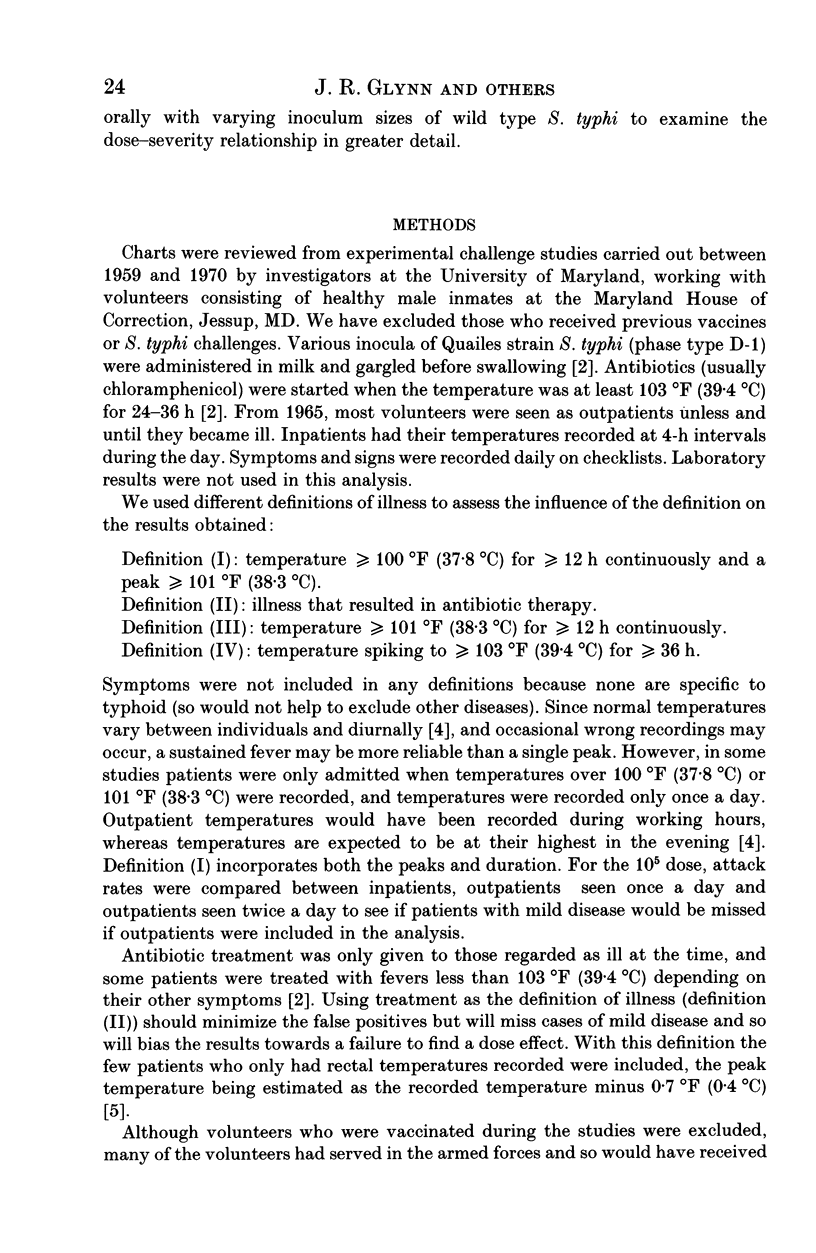
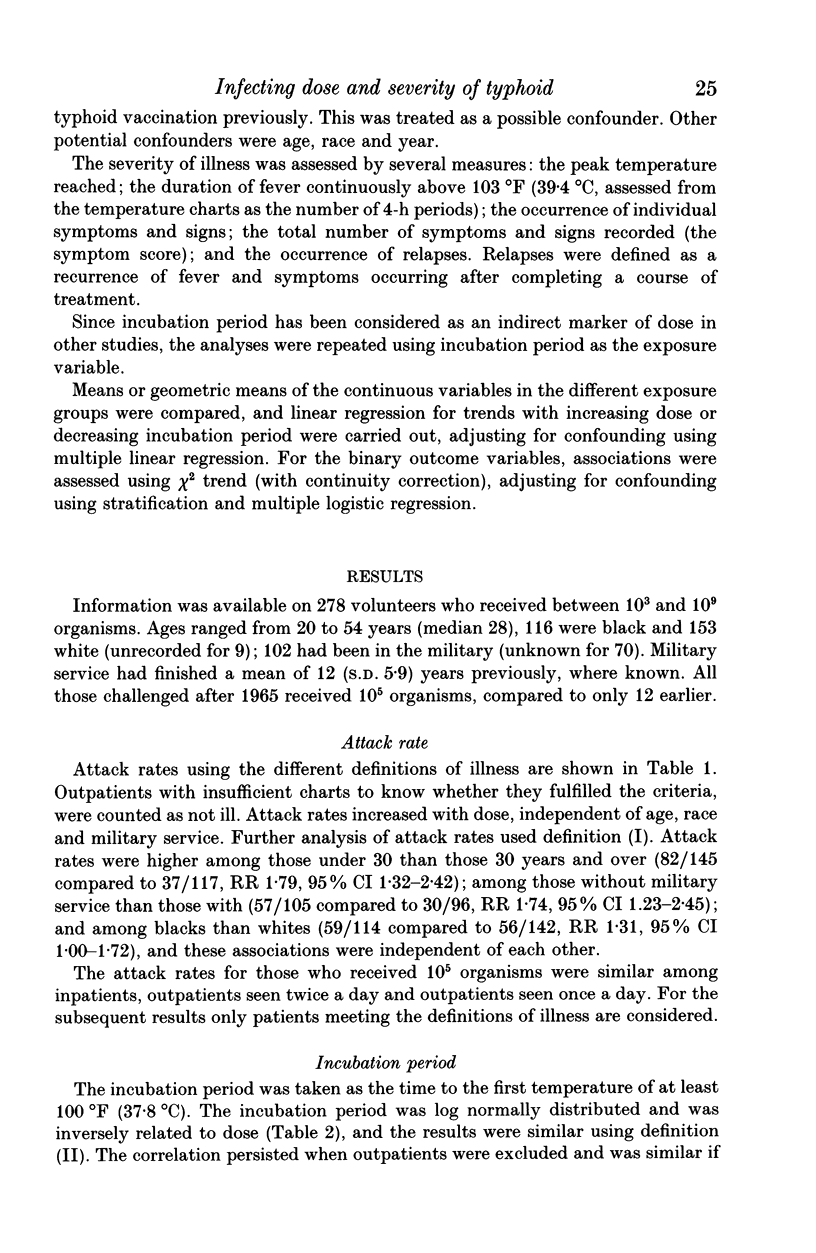
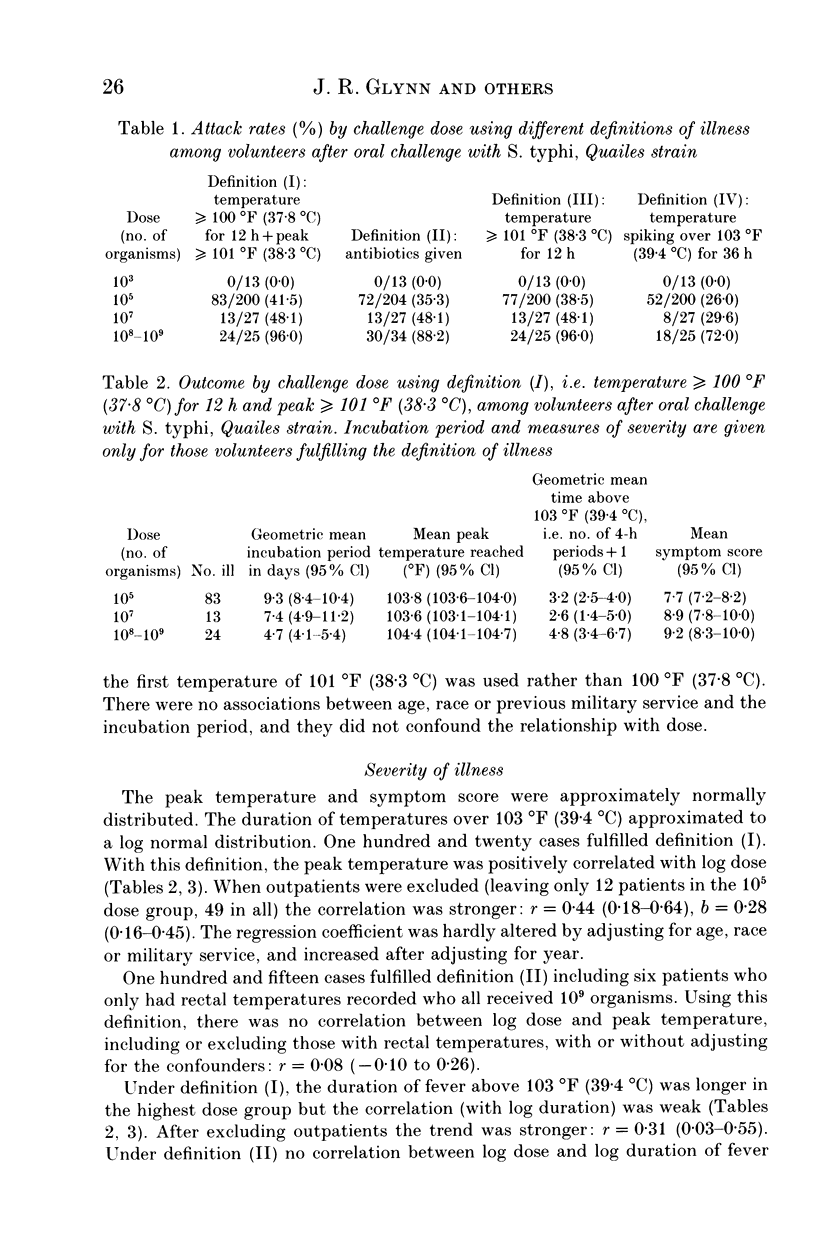
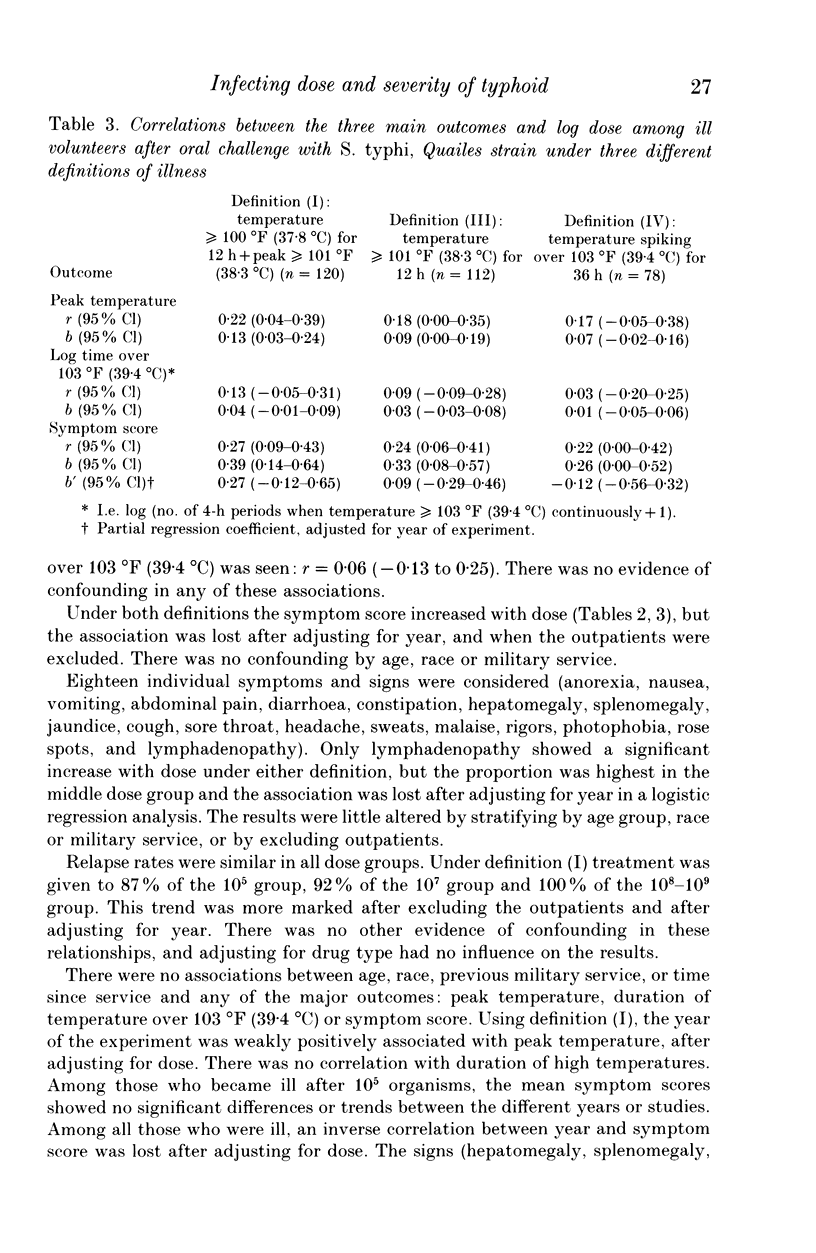
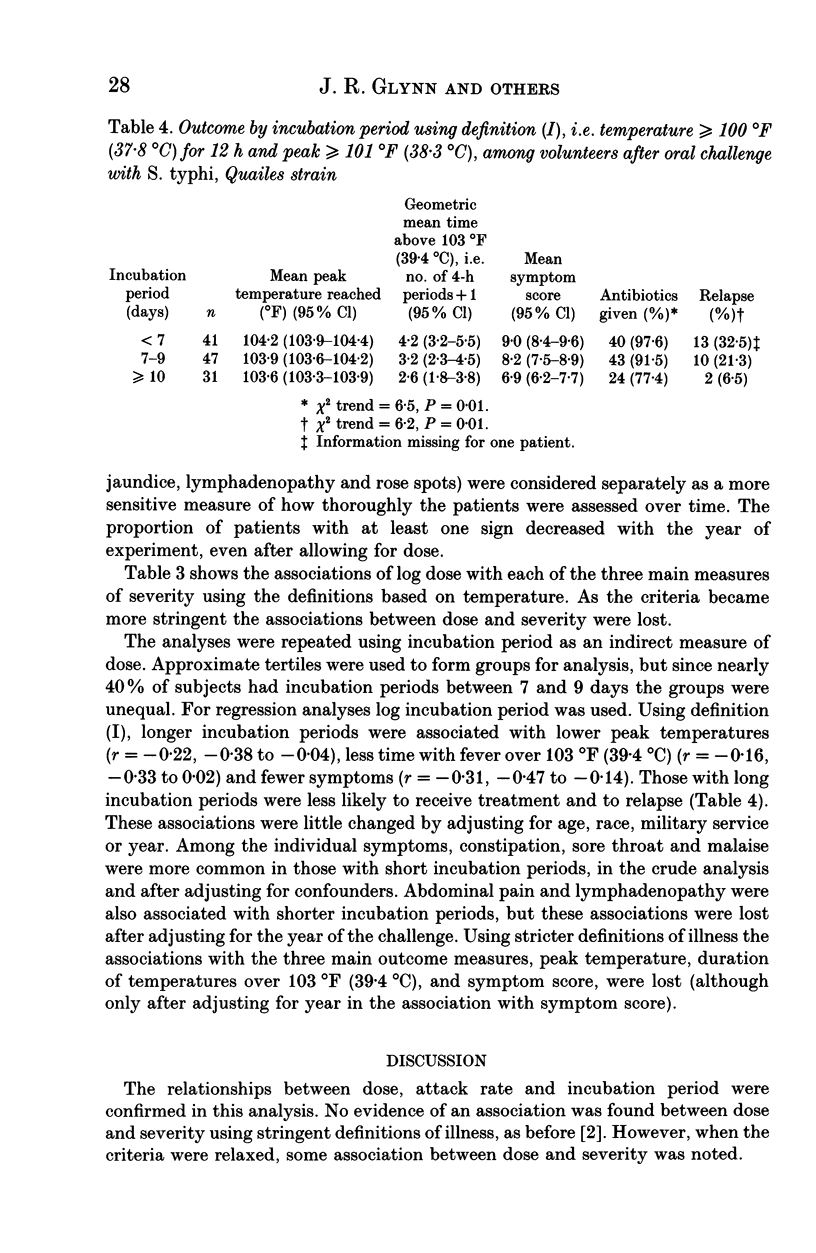
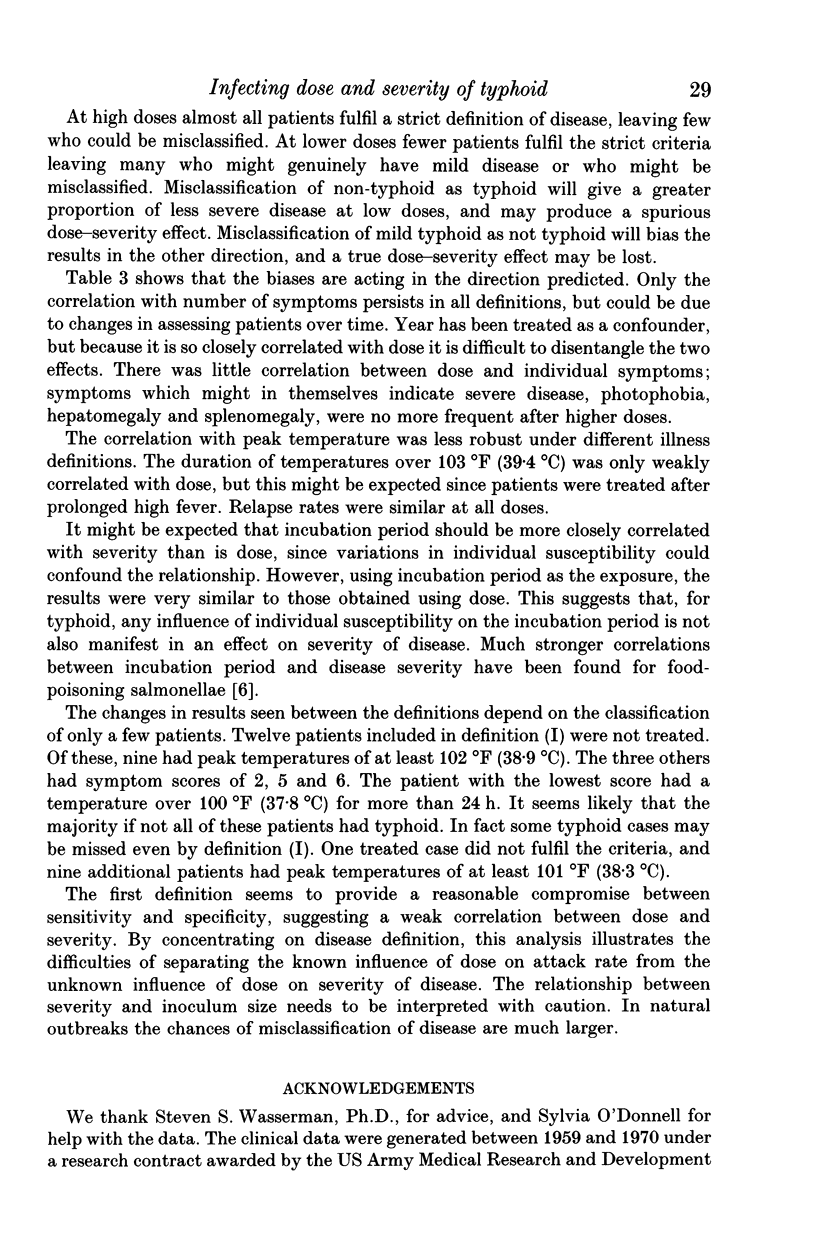
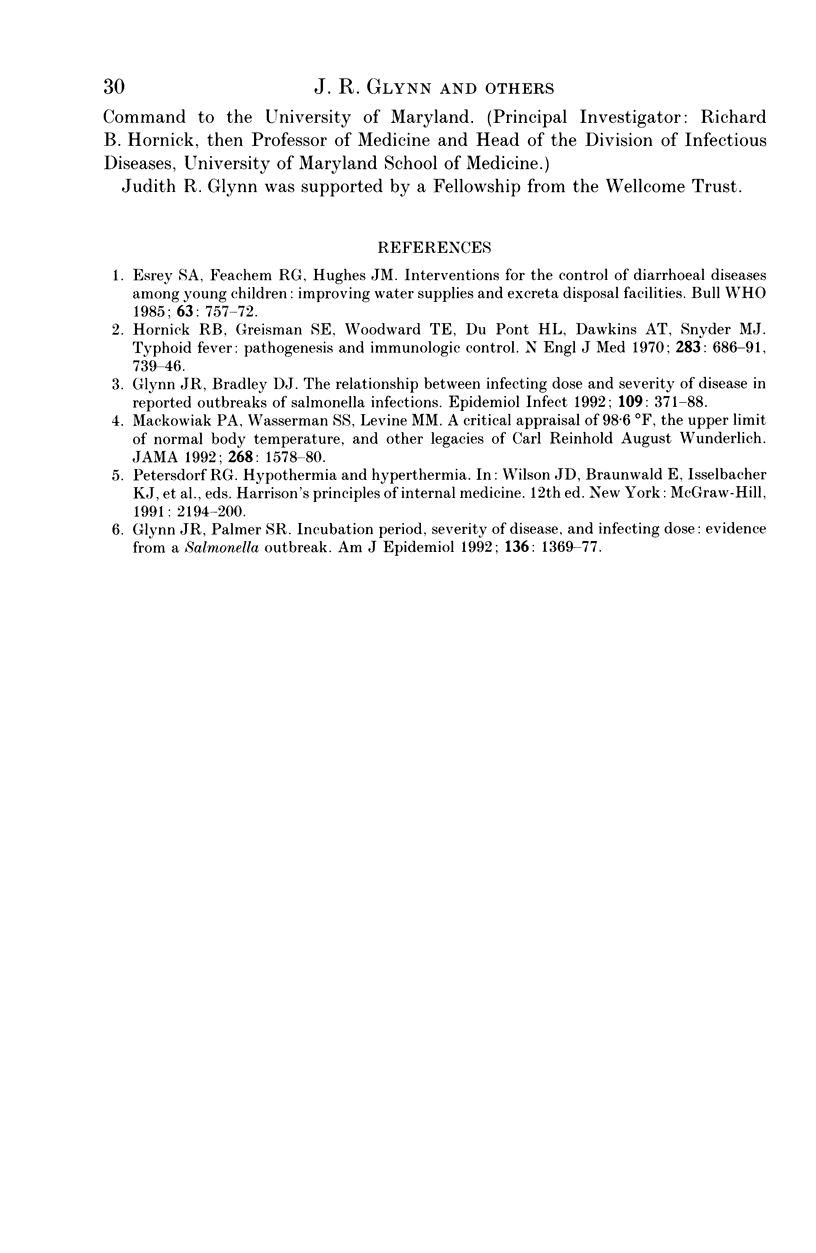
Selected References
These references are in PubMed. This may not be the complete list of references from this article.
- Esrey S. A., Feachem R. G., Hughes J. M. Interventions for the control of diarrhoeal diseases among young children: improving water supplies and excreta disposal facilities. Bull World Health Organ. 1985;63(4):757–772. [PMC free article] [PubMed] [Google Scholar]
- Glynn J. R., Bradley D. J. The relationship between infecting dose and severity of disease in reported outbreaks of Salmonella infections. Epidemiol Infect. 1992 Dec;109(3):371–388. doi: 10.1017/s0950268800050366. [DOI] [PMC free article] [PubMed] [Google Scholar]
- Glynn J. R., Palmer S. R. Incubation period, severity of disease, and infecting dose: evidence from a Salmonella outbreak. Am J Epidemiol. 1992 Dec 1;136(11):1369–1377. doi: 10.1093/oxfordjournals.aje.a116449. [DOI] [PubMed] [Google Scholar]
- Hornick R. B., Greisman S. E., Woodward T. E., DuPont H. L., Dawkins A. T., Snyder M. J. Typhoid fever: pathogenesis and immunologic control. N Engl J Med. 1970 Sep 24;283(13):686–691. doi: 10.1056/NEJM197009242831306. [DOI] [PubMed] [Google Scholar]
- Mackowiak P. A., Wasserman S. S., Levine M. M. A critical appraisal of 98.6 degrees F, the upper limit of the normal body temperature, and other legacies of Carl Reinhold August Wunderlich. JAMA. 1992 Sep 23;268(12):1578–1580. [PubMed] [Google Scholar]


